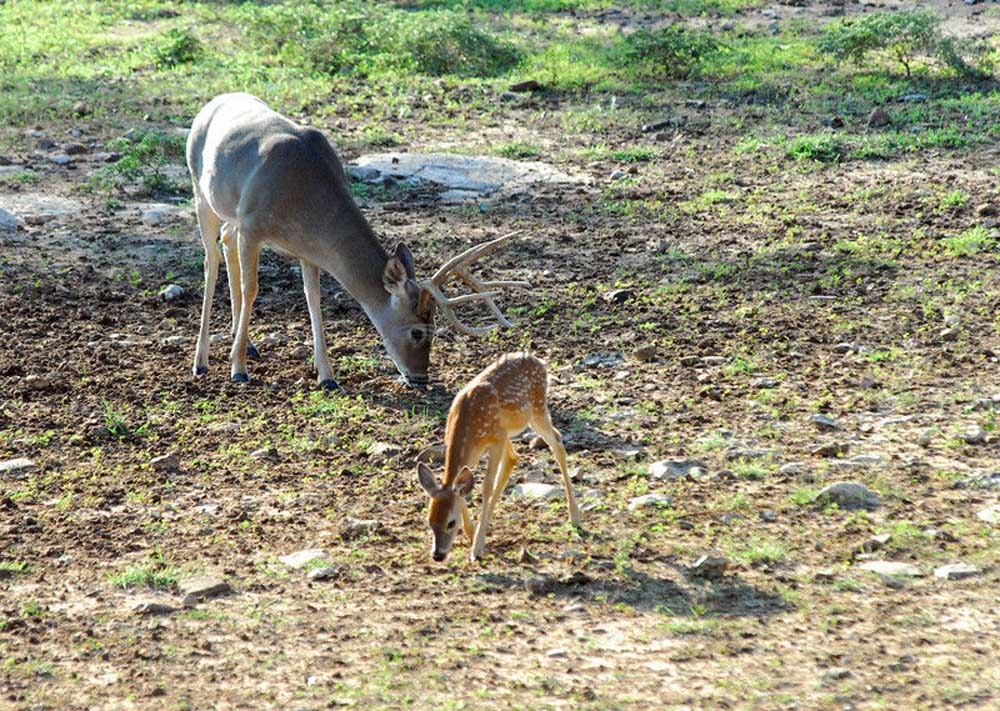Looking Ahead
Published 12:27 am Thursday, July 31, 2014

- Staff File Photo With improved ranged conditions across much of Texas’ white-tailed deer habitat, hunters can expect a good antler year and high fawn survival.
By this point the die has been cast as far as Texas white-tailed deer quality is concerned.
There is still a lot of growing time to go before bucks start to shed their velvet and hunters take to the stand, but if someone was going to make a general predication as to whether this would be a good or bad antler year the answer would be simple. It should be pretty good. Maybe really good in some places.
Typically biologists don’t like to make advanced predictions because of the uncertainties of Texas’ summer weather. This year’s milder and wet conditions during the peak of the antler growing season have made the guesswork a lot easier.
“My prediction (in the spring) was the 2014 season would be similar to the last three years, average to below average with regards to quality and overall hunting, much of that related to the drier conditions Texas had experienced,” Alan Cain, Texas Parks and Wildlife Department’s white-tailed deer program leader, wrote in an early pre-season forecast.
Then the rains came, maybe not soon enough or heavy enough everywhere, but across much of the state the land changed from a moonscape to lush deer habitat.
“Conditions started to improve, in some cases dramatically, as the month of May welcomed good rains across many areas of Texas. For parts of North Texas in the Cross Timbers region and areas east of I-35 habitat conditions in the early spring were in decent shape, and were expected to provide deer the resources they needed to stay in good shape over the summer,” Cain said.
The conditions in the eastern third of the state started at good and just improved, leaving Cain to predict an above-average year.
“Fortunately, South Texas, the Hill Country and lands to the west received some reasonable rains this spring giving the habitat and vegetation a much needed boost to stay green as we headed into summer. These favorable conditions should help deer through the summer. However, because these areas didn’t have much winter moisture or receive the early spring rains the flush of green weeds weren’t available to provide the nutritional boost bucks needed to get a jump start on antler growth and overall antler quality,” Cain said. He still expects an average year antler-wise to the west.
Of course those predictions come with the usual caveat that the better bucks will probably come from ranches that have been better managed, including keeping deer densities low and offering ample protein whether it be from native habitat or supplemental feeding.
Last year TPWD estimated a deer population of about 3.8 million.
“For the most part hunters can expect to see about the same number of deer as in 2013. Deer population trends in most regions of the state are stable or in some cases increasing at a slow rate. Bottom line from a hunter perspective is there will be plenty of animals to pursue in 2014,” Cain said.
Along with annual habitat conditions the number of quality bucks also depends on good fawn crops in previous years.
Cain said TPWD data shows good years in 2007, 2010, 2012 and 2013.
While 7-year-old deer may be rare on open range, bucks born in 2010 could provide some good trophies this season.
Cain expects another good fawn crop this year. Combined with strong survival the last two years hunters could be looking at three or four good years back-to-back in the future.
Last season Texas hunters took more than 625,000 deer including 330,000 bucks.
“Hunter success was estimated to be 58 percent with an average harvest per hunter of .89 deer. Not too bad of odds for a person pursing a white-tailed deer in Texas. Hopefully, 2014 will have similar odds if not better,” Cain said.
Not surprisingly the Hill Country is home to the most deer with an estimated population of 2.1 million as of 2013.
East Texas’ Post Oak Savannah and North Central Texas’ Cross Timbers regions are next with an estimated 400,000 each. The Pineywoods has about 240,000 deer while South Texas has 230,000.
TPWD won’t begin its annual deer counts until later in August and into September.
At that point they will get a better idea of whether Cain’s predictions are right or not. They will also get an idea of how hard hunting might be as they get an estimate of this year’s acorn crop.
“Although Texas has a healthy and abundant deer population if we see a good mast crop this year in the early fall, hunting season will be a bit challenging as deer may not visit the corn feeder as frequently. It’s a bit early to predict acorn or mesquite bean production this year so hunters will have to take the wait and see approach as to how that may play out,” Cain said.
Have a comment or opinion on this story? Contact outdoor writer Steve Knight by email at outdoor@tylerpaper.com. Follow Steve Knight on Facebook at TylerPaper Outdoors and on Twitter @tyleroutdoor.






